Best AI tools for< Iterate Prompts >
20 - AI tool Sites
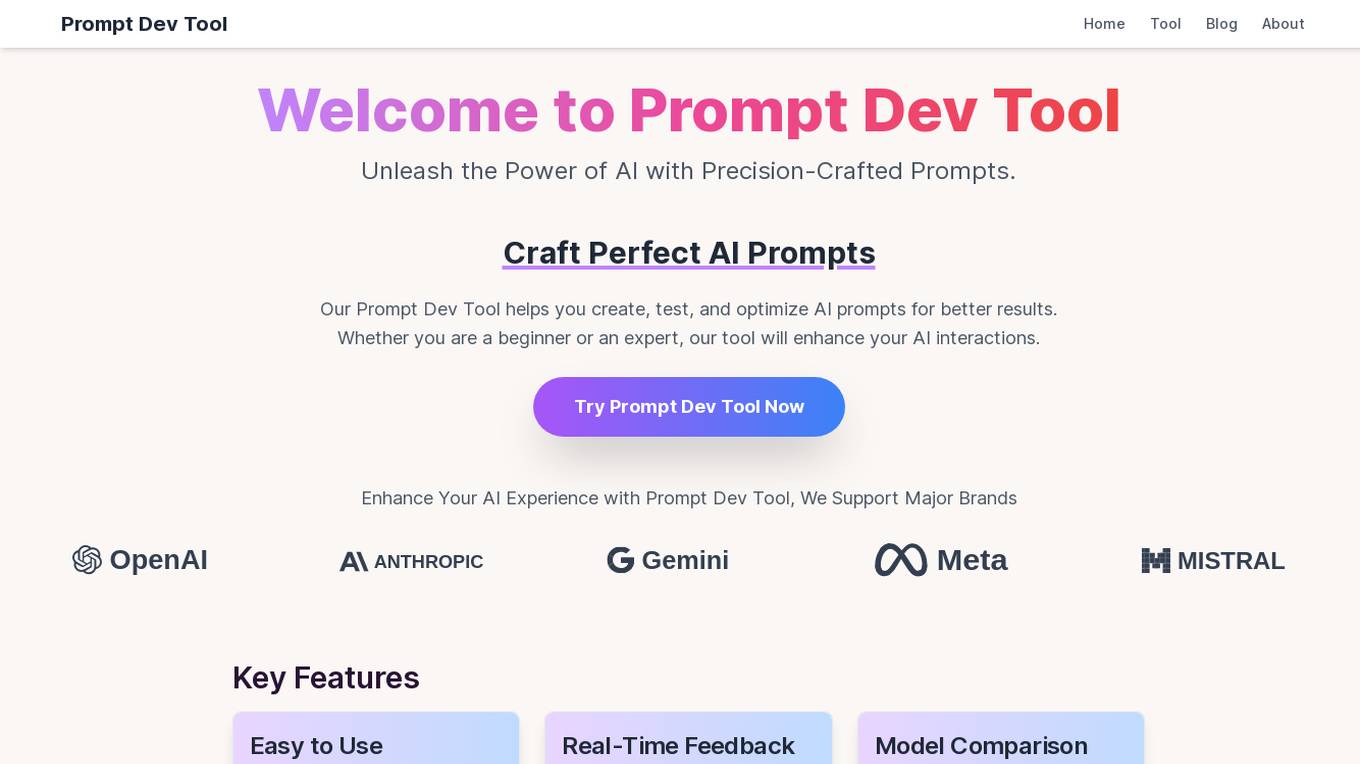
Prompt Dev Tool
Prompt Dev Tool is an AI application designed to boost prompt engineering efficiency by helping users create, test, and optimize AI prompts for better results. It offers an intuitive interface, real-time feedback, model comparison, variable testing, prompt iteration, and advanced analytics. The tool is suitable for both beginners and experts, providing detailed insights to enhance AI interactions and improve outcomes.

Lisapet.AI
Lisapet.AI is an AI prompt testing suite designed for product teams to streamline the process of designing, prototyping, testing, and shipping AI features. It offers a comprehensive platform with features like best-in-class AI playground, variables for dynamic data inputs, structured outputs, side-by-side editing, function calling, image inputs, assertions & metrics, performance comparison, data sets organization, shareable reports, comments & feedback, token & cost stats, and more. The application aims to help teams save time, improve efficiency, and ensure the reliability of AI features through automated prompt testing.
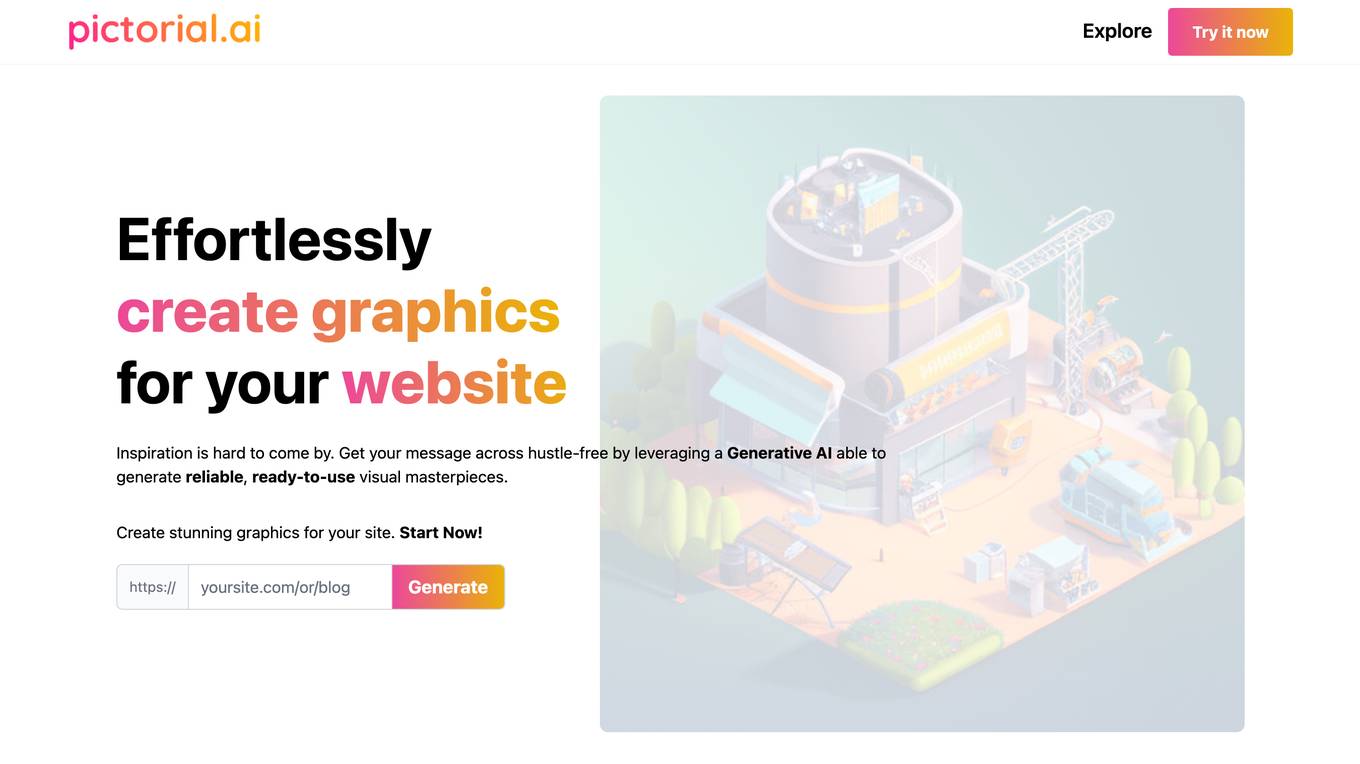
Pictorial
Pictorial is an AI-powered visual generator application that allows users to effortlessly create graphics for web applications. By leveraging Generative AI technology, users can generate reliable and ready-to-use visual masterpieces to enhance their website's visuals. The application offers prompts based on user input, diverse styles, and the ability to iterate or generate alternatives to create professional designs. Pictorial is the first application of Generative AI that is useful for businesses, providing powerful visuals just from a URL. Users can expect a hassle-free experience in creating stunning graphics for their sites.

Soundverse AI
Soundverse AI is an AI music generator and music assistant that allows users to create music instantly from text prompts, interact with a voice assistant for music-related help, chat with the assistant for music recommendations, extend existing tracks with new sections, isolate individual audio tracks from a mix, auto-complete songs using initial ideas, craft lyrics with AI assistance, and more. The platform offers a range of AI tools to help users iterate and personalize their music creation process, making it easy to transform ideas into music in seconds.

Visualizee.ai
Visualizee.ai is the #1 AI rendering tool that transforms sketches, images, 3D models, or text prompts into realistic renders in just 10 seconds. It offers tools to enhance creativity, such as converting low-detail models into high-resolution renders, inpainting missing parts of images, and upscaling image resolution without compromising detail. With pricing plans starting at $9, Visualizee.ai is trusted by over 2100 architects and designers for its ease of use and efficiency in generating renders. The application allows users to create unlimited renders, work directly on 3D models, and iterate quickly to achieve perfect results, making it an essential tool for architects and designers.
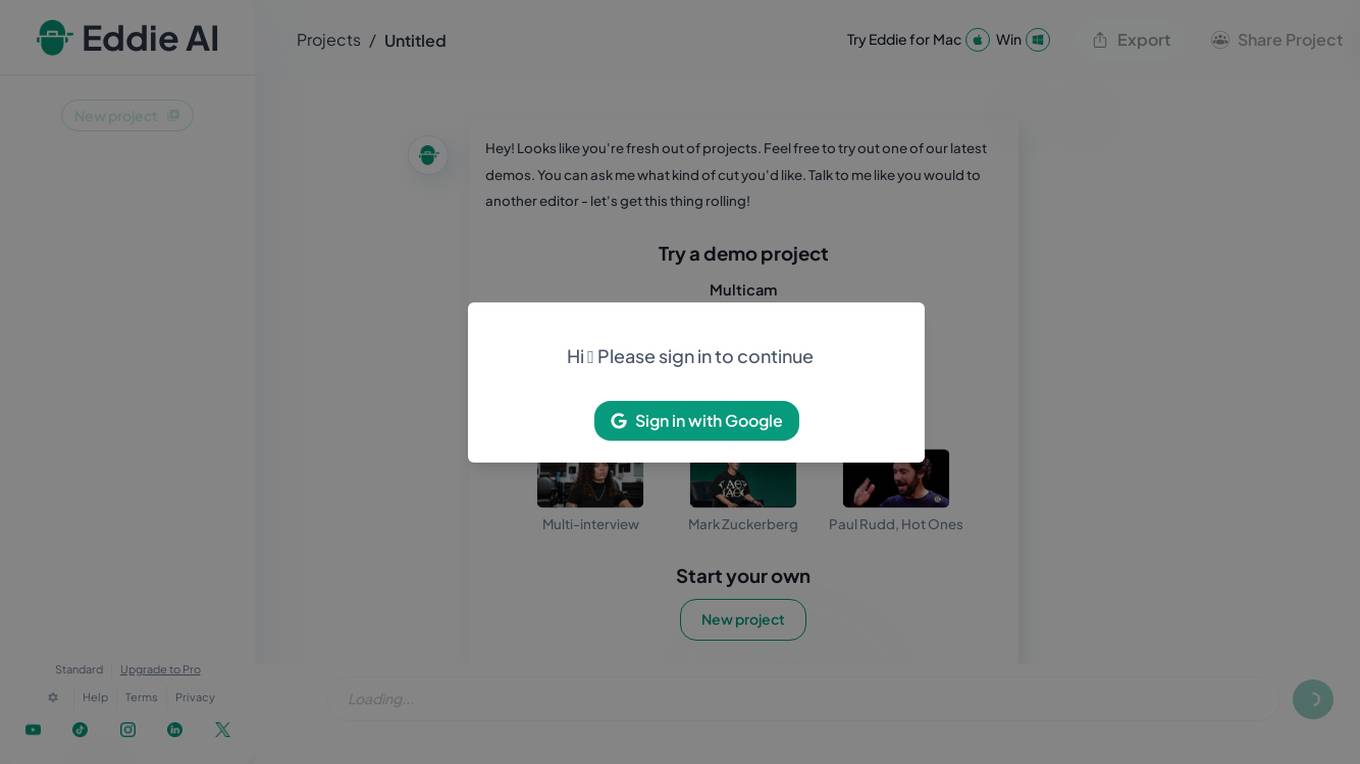
Eddie AI Storyteller
Eddie is an AI storytelling tool that helps users create engaging and compelling narratives effortlessly. With Eddie, users can generate content for various purposes such as marketing campaigns, social media posts, blog articles, and more. The tool utilizes advanced natural language processing algorithms to assist users in crafting well-structured and coherent stories. Whether you're a content creator, marketer, or blogger, Eddie can streamline your storytelling process and enhance your content creation experience.

Ardor
Ardor is an AI tool that offers an all-in agentic software development lifecycle automation platform. It helps users build, deploy, and scale AI agents on the cloud efficiently and cost-effectively. With Ardor, users can start with a prompt, design AI agents visually, see their product get built, refine and iterate, and launch in minutes. The platform provides real-time collaboration features, simple pricing plans, and various tools like Ardor Copilot, AI Agent-Builder Canvas, Instant Build Messages, AI Debugger, Proactive Monitoring, Role-Based Access Control, and Single Sign-On.
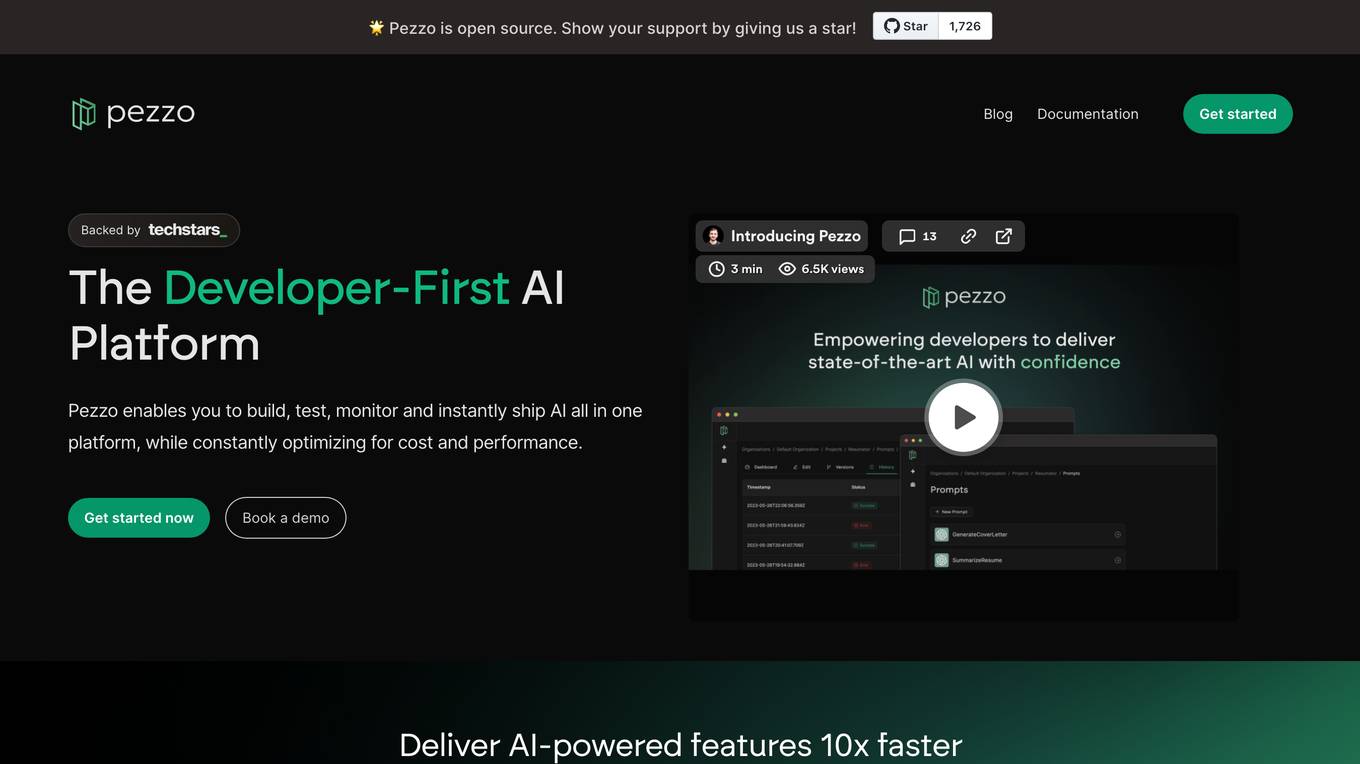
Pezzo
Pezzo is an open-source platform that enables developers to build, test, monitor, and ship AI features quickly and efficiently. It provides a range of powerful features to streamline the workflow, including prompt management, observability, troubleshooting, and collaboration tools. With Pezzo, teams can deliver impactful AI features in sync and optimize for cost and performance.
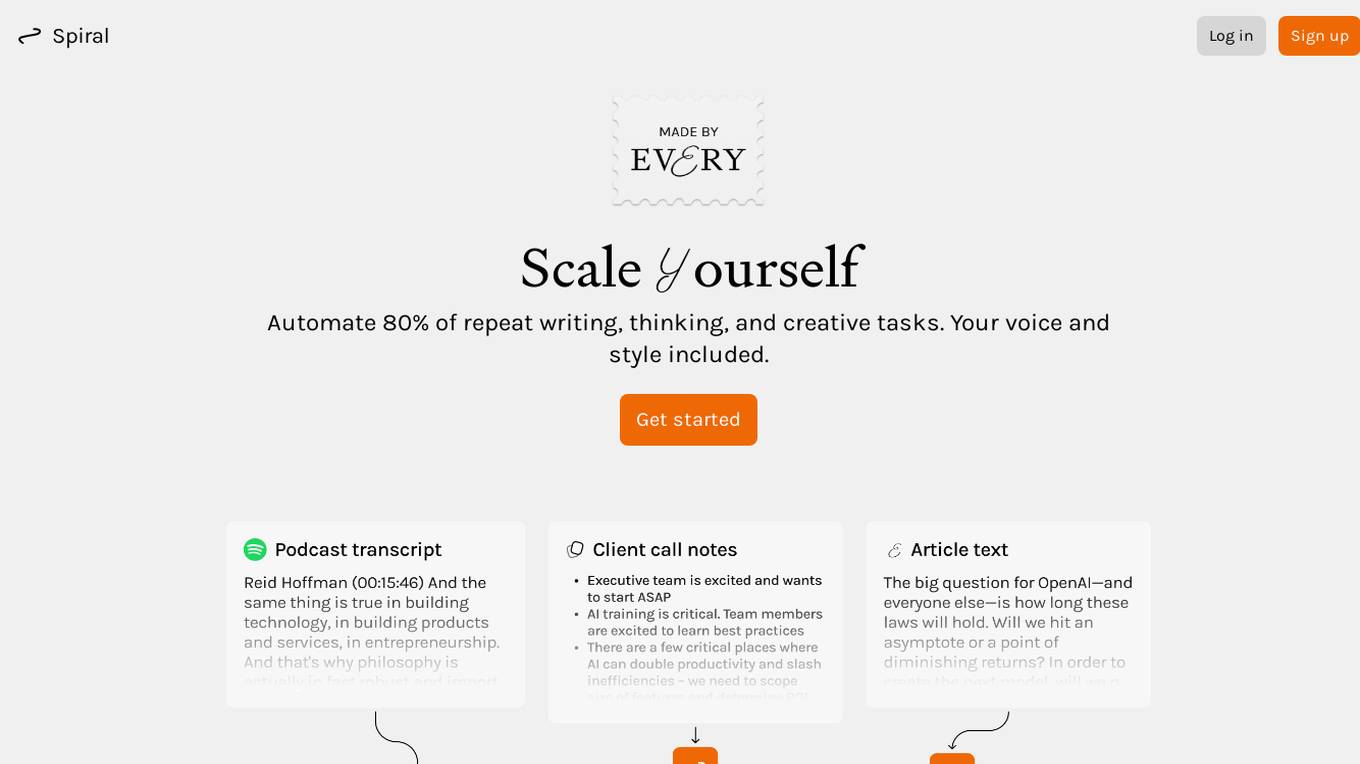
Spiral
Spiral is an AI-powered tool designed to automate 80% of repeat writing, thinking, and creative tasks. It allows users to create Spirals to accelerate any writing task by training it on examples to generate outputs in their desired voice and style. The tool includes a powerful Prompt Builder to help users work faster and smarter, transforming content into tweets, PRDs, proposals, summaries, and more. Spiral extracts patterns from text to deduce voice and style, enabling users to iterate on outputs until satisfied. Users can share Spirals with their team to maximize quality and streamline processes.
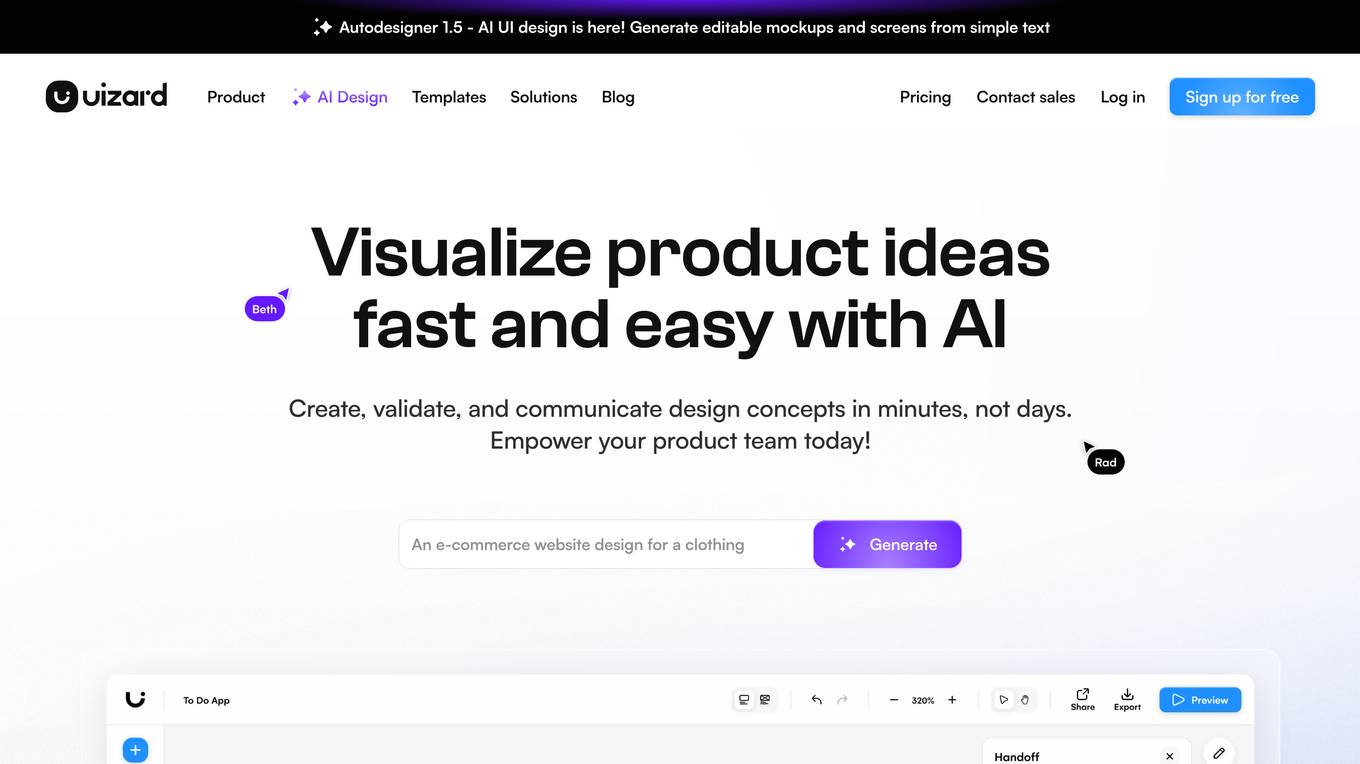
Uizard
Uizard is an AI-powered UI design tool that simplifies the process of creating user interfaces, wireframes, mockups, and prototypes. It offers a range of features that enable users to generate designs quickly and easily using AI technology. With Uizard, users can visualize and iterate on their design ideas in minutes, empowering product teams to bring their concepts to life effortlessly.
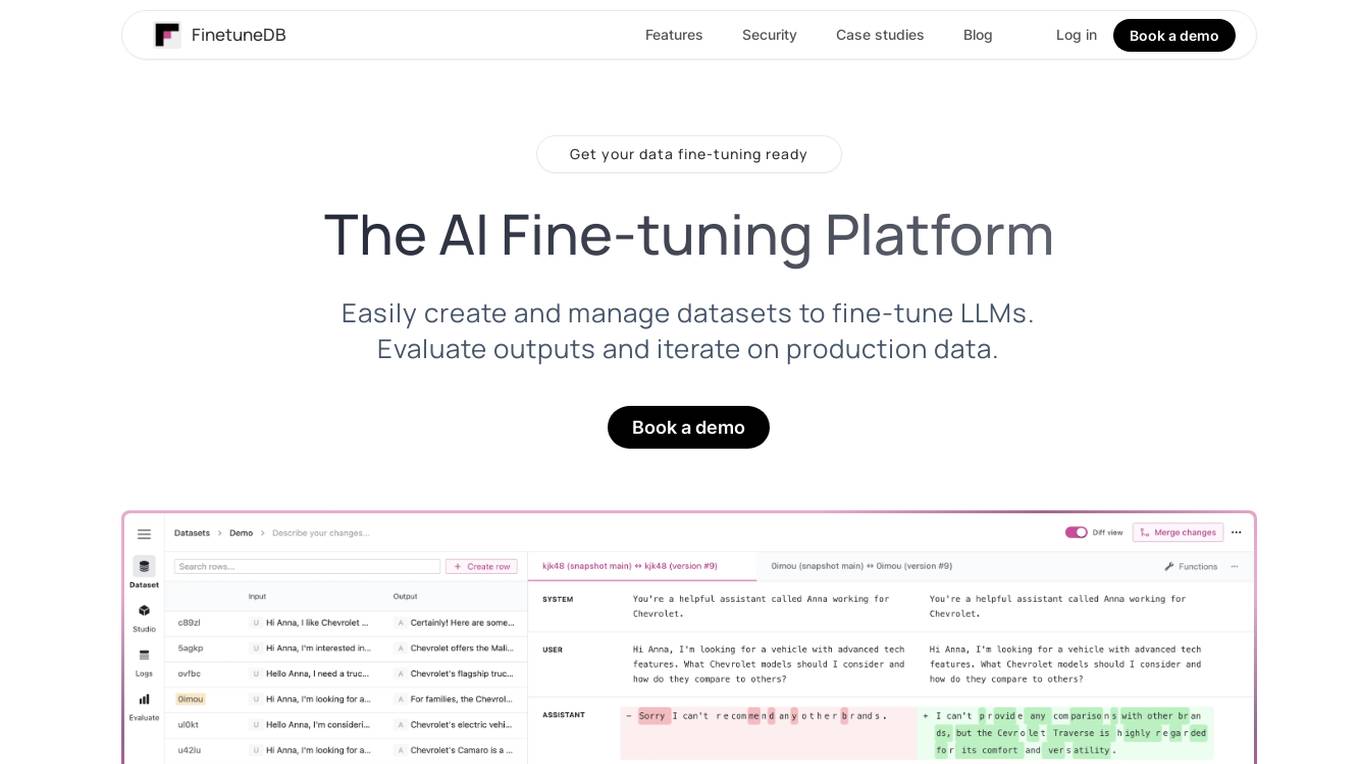
FinetuneDB
FinetuneDB is an AI fine-tuning platform that allows users to easily create and manage datasets to fine-tune LLMs, evaluate outputs, and iterate on production data. It integrates with open-source and proprietary foundation models, and provides a collaborative editor for building datasets. FinetuneDB also offers a variety of features for evaluating model performance, including human and AI feedback, automated evaluations, and model metrics tracking.

Comfy Org
Comfy Org is an open-source AI tooling platform dedicated to advancing and democratizing AI technology. The platform offers tools like node manager, node registry, CLI, automated testing, and public documentation to support the ComfyUI ecosystem. Comfy Org aims to make state-of-the-art AI models accessible to a wider audience by fostering an open-source and community-driven approach. The team behind Comfy Org consists of individuals passionate about developing and maintaining various components of the platform, ensuring a reliable and secure environment for users to explore and contribute to AI tooling.
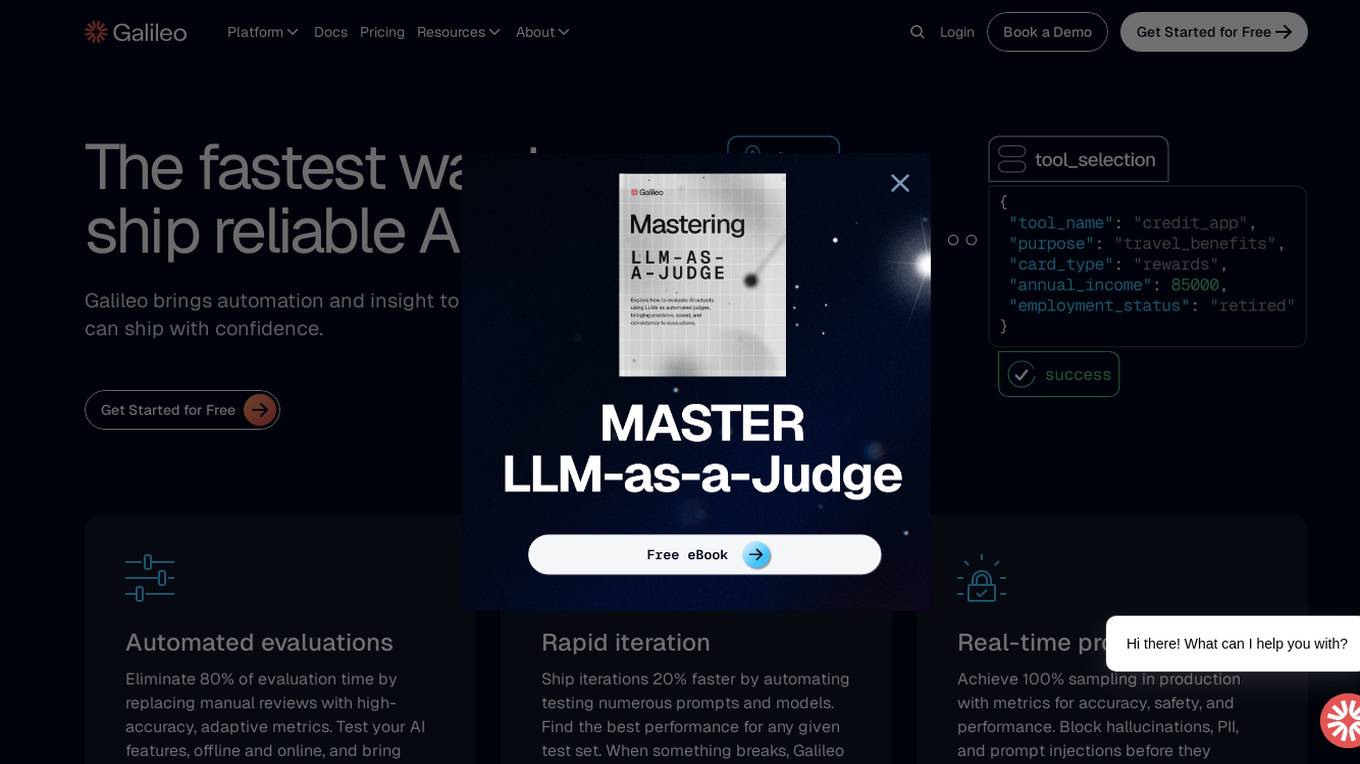
Galileo AI
Galileo AI is a platform that offers automated evaluations for AI applications, bringing automation and insight to AI evaluations to ensure reliable and confident shipping. It helps in eliminating 80% of evaluation time by replacing manual reviews with high-accuracy metrics, enabling rapid iteration, achieving real-time protection, and providing end-to-end visibility into agent completions. Galileo also allows developers to take control of AI complexity, de-risk AI in production, and deploy AI applications flexibly across different environments. The platform is trusted by enterprises and loved by developers for its accuracy, low-latency, and ability to run on L4 GPUs.
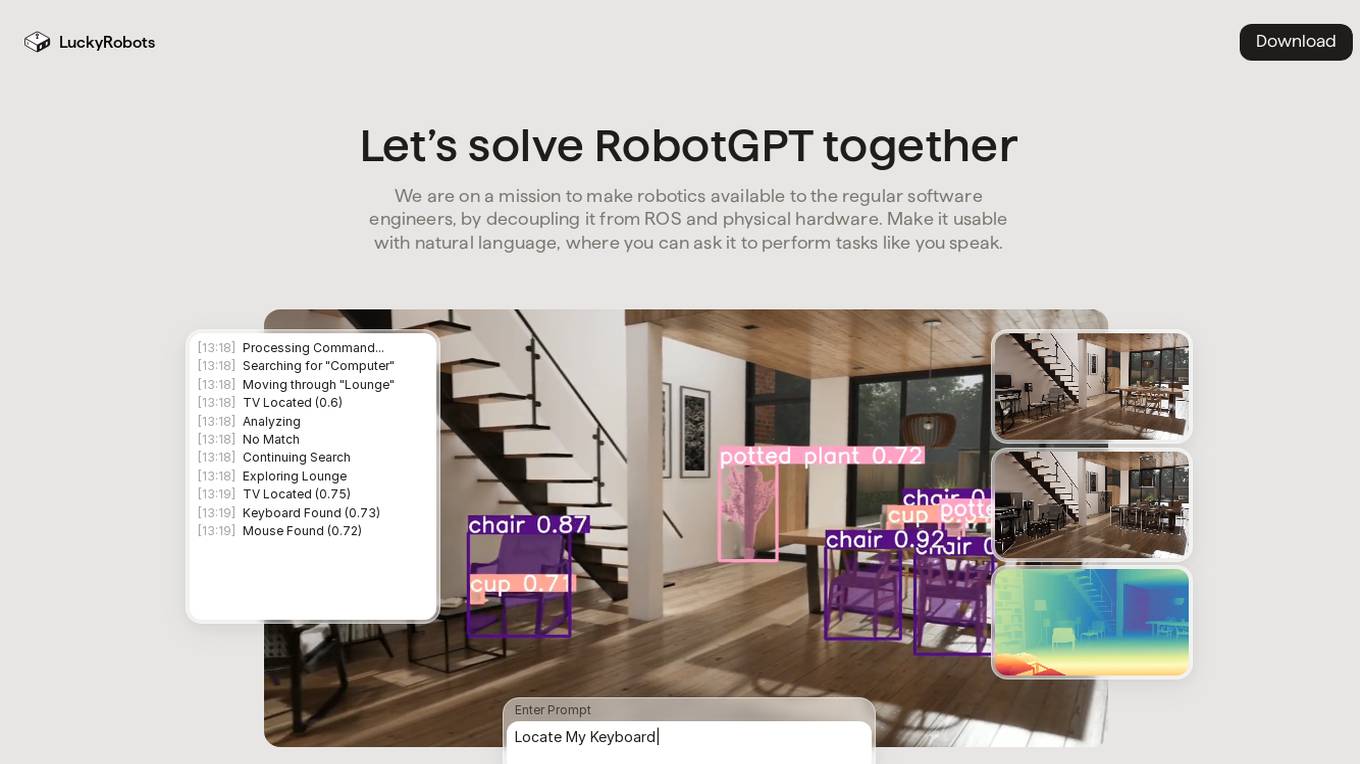
LuckyRobots
LuckyRobots is an AI tool designed to make robotics accessible to software engineers by providing a simulation platform for deploying end-to-end AI models. The platform allows users to interact with robots using natural language commands, explore virtual environments, test robot models in realistic scenarios, and receive camera feeds for monitoring. LuckyRobots aims to train AI models on real-world simulations and respond to natural language inputs, offering a user-friendly and innovative approach to robotics development.
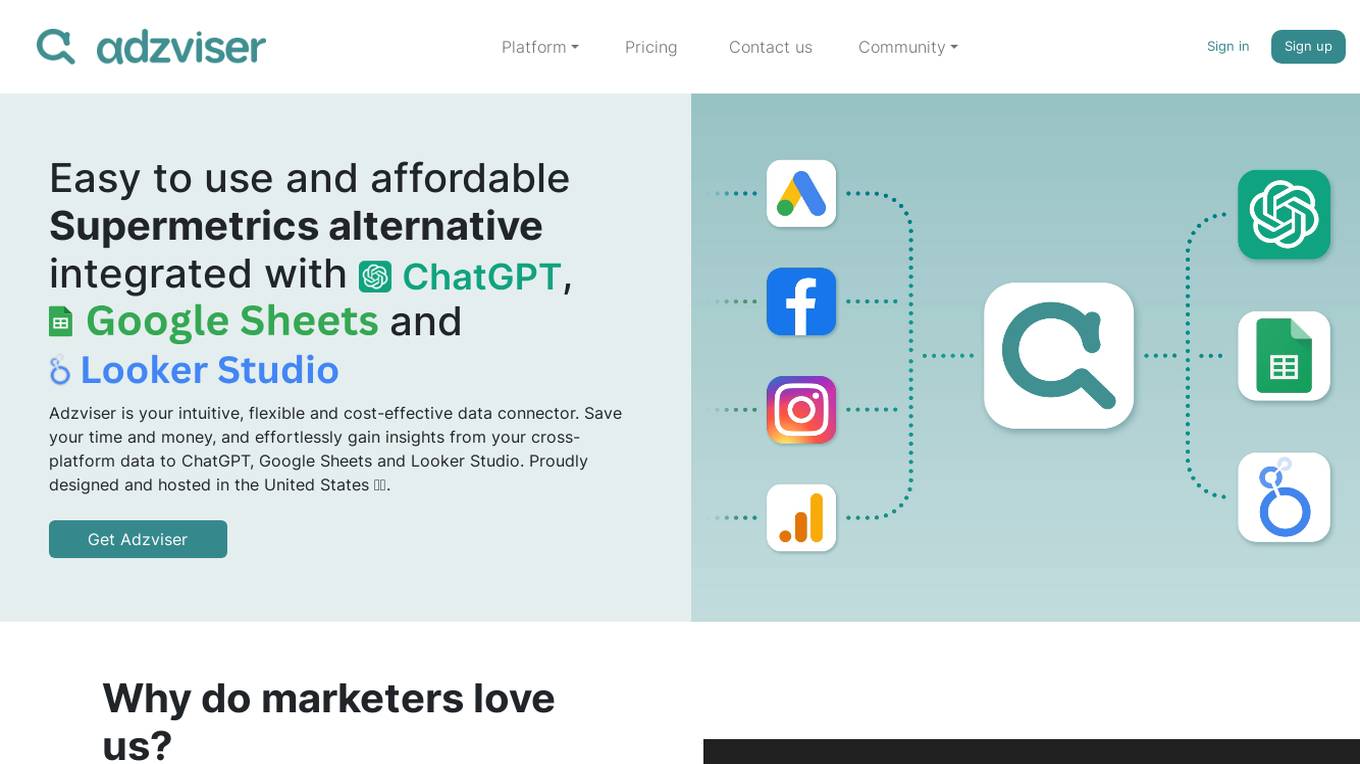
Adzviser
Adzviser is an AI-powered marketing data connector that seamlessly integrates with ChatGPT, Google Sheets, and Looker Studio. It offers an intuitive and cost-effective solution for analyzing cross-platform data, providing users with valuable insights to optimize their marketing strategies. Adzviser simplifies data extraction and analysis, making it accessible to users of all skill levels, without the need for technical expertise. The application is designed to enhance marketing analytics endeavors for businesses of all scales, from small in-house teams to large agencies managing multiple accounts.
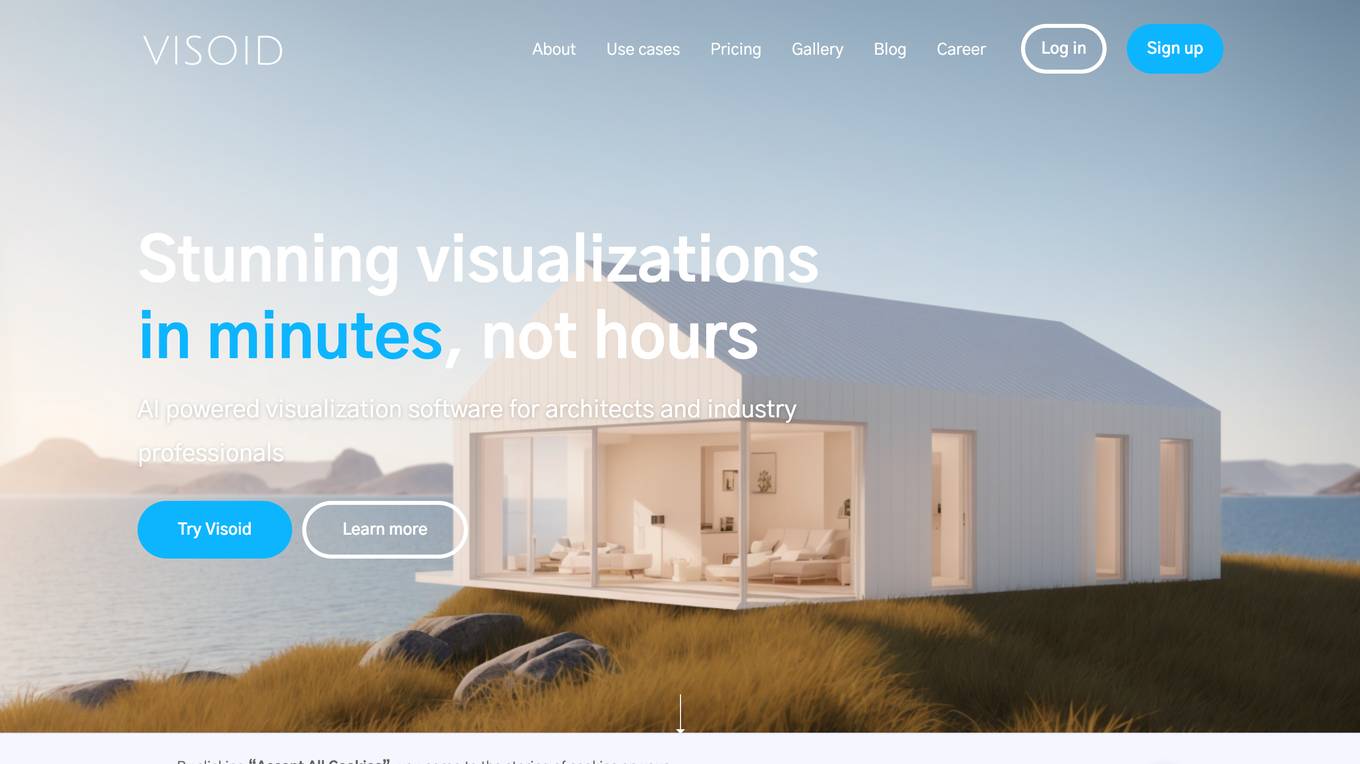
Visoid
Visoid is an AI-powered architectural visualization tool that allows architects and industry professionals to create stunning visualizations in minutes. It offers a simple web-based application for fast rendering, enabling users to iterate on images, explore variations, and communicate concepts effectively. With Visoid, users can transform ideas into powerful renderings, elevate early concept phase communication, and visualize projects in different lighting or seasons. The tool is designed to save time, improve communication, and provide different license options to match users' needs.
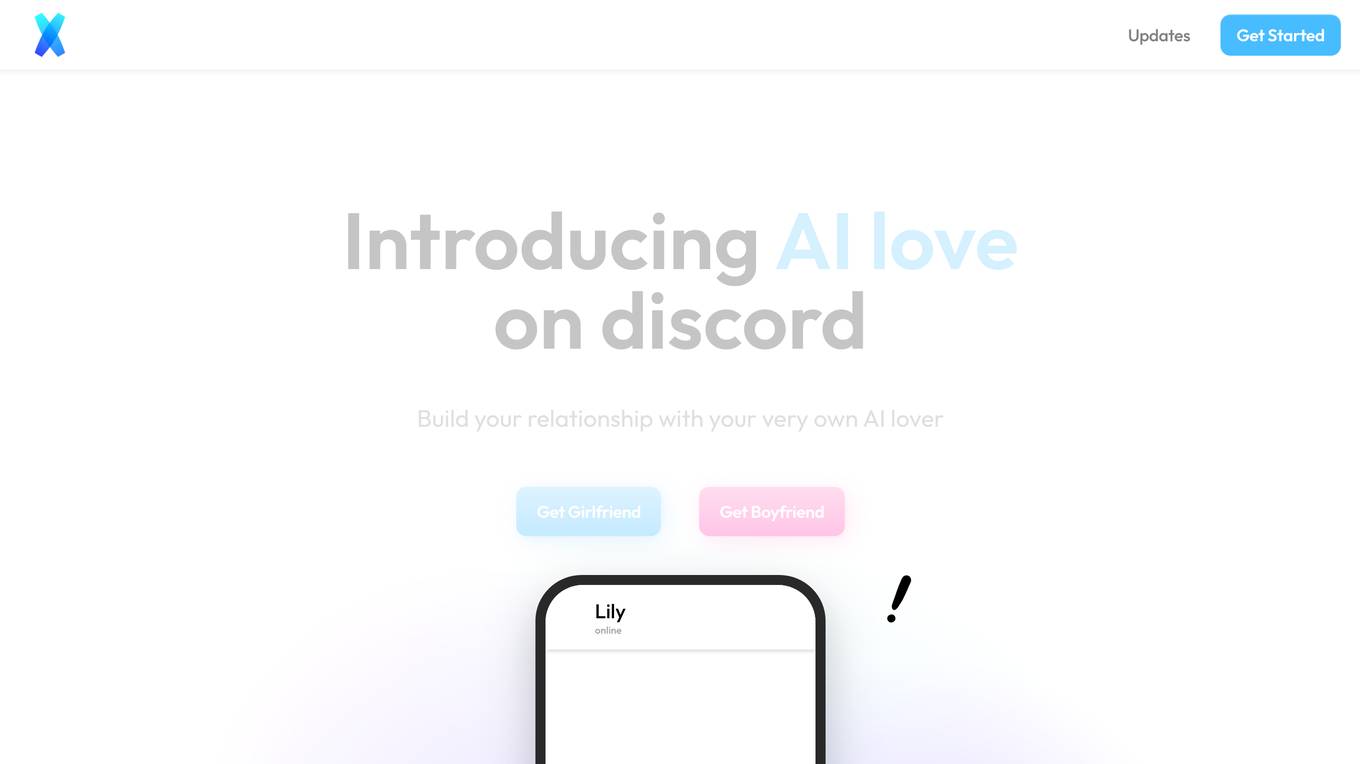
Framer
Framer is a platform that allows users to create interactive prototypes for web and mobile applications. With Framer, users can design and prototype their projects with ease, enabling them to visualize and test their ideas before implementation. The platform offers a range of tools and features to streamline the design process and enhance collaboration among team members. Framer is suitable for designers, developers, and product managers looking to create high-fidelity prototypes and iterate on their designs efficiently.

Prototyper
Prototyper is an AI-powered tool that helps you create prototypes of your ideas quickly and easily. With Prototyper, you can describe your idea in simple text, and the AI will generate the code for you. You can then test your prototype and iterate on it until you're happy with the results.

Anysphere
Anysphere is an applied research lab focused on automating coding by creating a human-AI programmer that is significantly more effective than a single programmer. The lab combines AI and human ingenuity to develop software and models that push the boundaries of what's possible in programming. Anysphere's work has already positively impacted the lives of millions of programmers.

Flair.ai
Flair.ai is an AI-powered design tool that helps businesses create stunning product photoshoots in seconds. With Flair.ai, you can drag and drop to generate product shots, stage scenes digitally, mix and match products with templates, and build reusable templates at scale. Flair.ai also offers a range of features to help you iterate on designs fast, collaborate with team members, and scale your design with API.
1 - Open Source AI Tools
helicone
Helicone is an open-source observability platform designed for Language Learning Models (LLMs). It logs requests to OpenAI in a user-friendly UI, offers caching, rate limits, and retries, tracks costs and latencies, provides a playground for iterating on prompts and chat conversations, supports collaboration, and will soon have APIs for feedback and evaluation. The platform is deployed on Cloudflare and consists of services like Web (NextJs), Worker (Cloudflare Workers), Jawn (Express), Supabase, and ClickHouse. Users can interact with Helicone locally by setting up the required services and environment variables. The platform encourages contributions and provides resources for learning, documentation, and integrations.
6 - OpenAI Gpts
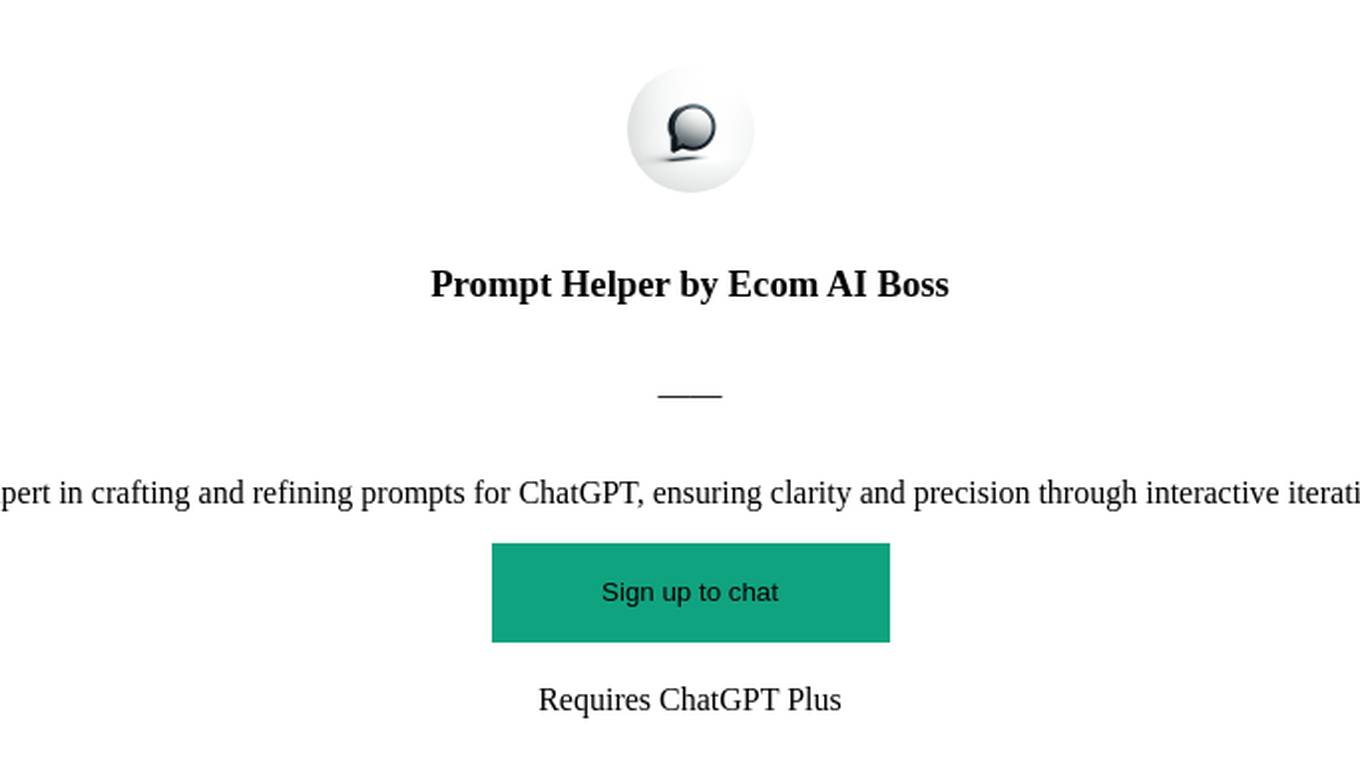
Prompt Helper by Ecom AI Boss
Expert in crafting and refining prompts for ChatGPT, ensuring clarity and precision through interactive iterations.
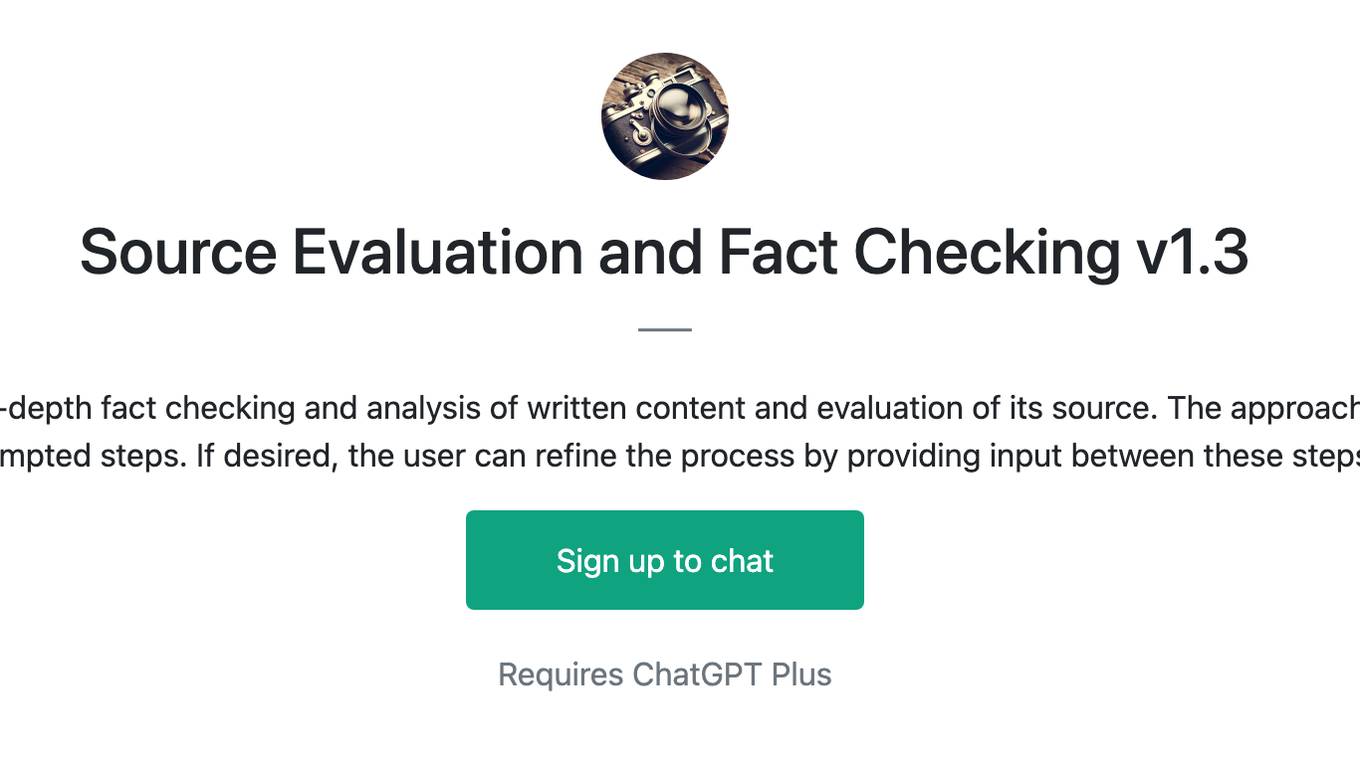
Source Evaluation and Fact Checking v1.3
FactCheck Navigator GPT is designed for in-depth fact checking and analysis of written content and evaluation of its source. The approach is to iterate through predefined and well-prompted steps. If desired, the user can refine the process by providing input between these steps.
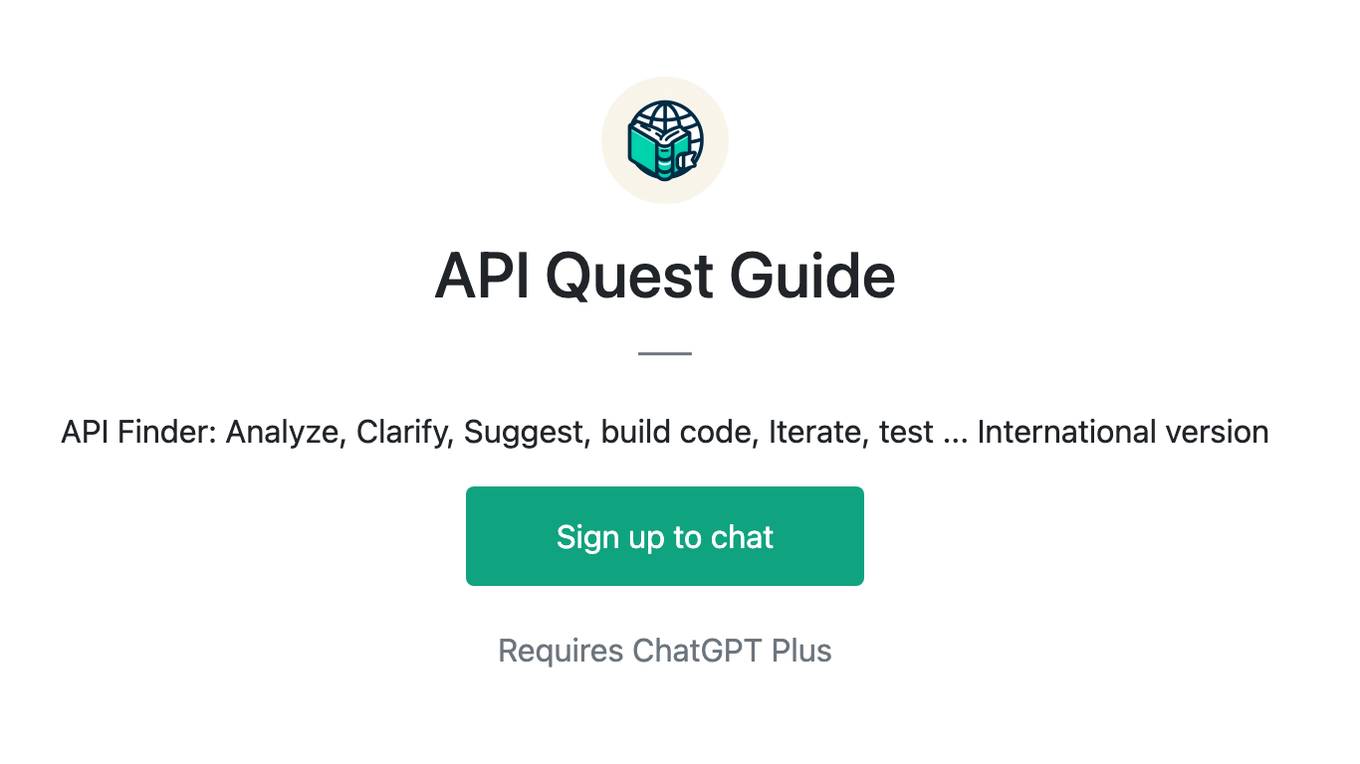
API Quest Guide
API Finder: Analyze, Clarify, Suggest, build code, Iterate, test ... International version
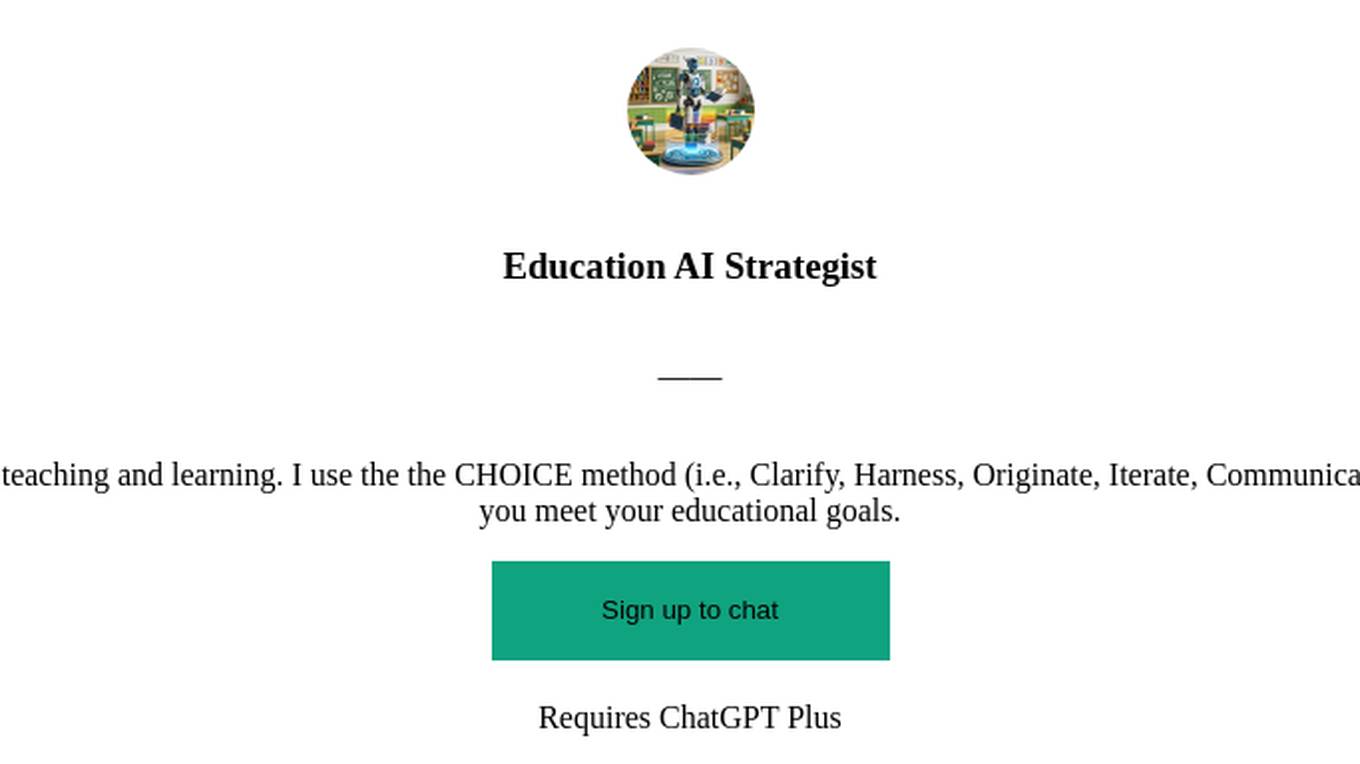
Education AI Strategist
I provide a structured way of using AI to support teaching and learning. I use the the CHOICE method (i.e., Clarify, Harness, Originate, Iterate, Communicate, Evaluate) to ensure that your use of AI can help you meet your educational goals.

